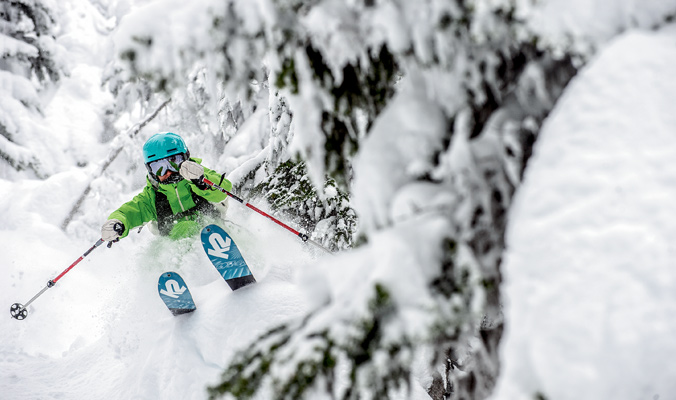
In February 2015, while skiing out of bounds in the Swiss Alps, Holly Walker was caught in an avalanche where she sustained a blown knee. During her recovery, she spent time processing her career, which, after college, landed her behind a desk and on British Columbia’s Whistler and Blackcomb ski patrols to satiate her need for mountain time. But the accident became a turning point, and in June 2016 Walker was accepted into the Association of Canadian Mountain Guides’ (ACMG) ski-guide program. With numerous descents on Alaska’s Denali and in the Tordrillo Mountains, and given her prior first-aid experience, she fast-tracked her training, is working toward her Canadian Avalanche Association Operations Level 2 and is well on her way to being a certified ski guide.
Learning to Guide
Sometimes you need a little negativity, a little kick in the butt to move out of your comfort zone. I passed my apprentice ski guide exam in April 2017, and there is such demand right now for guides. Everyone wants to go backcountry skiing, so it’s a great industry to be working in.
One cool opportunity recently presented itself when Ross Berg with Altus Mountain Guides reached out to me, and we started chatting about teaching women’s ski touring and mountaineering courses. That experience played a big role in me wanting to get into the industry. I loved taking women ski touring who had never had that experience, who had always been following a male partner or who had just been shy about the process. And this expanded into ski mountaineering courses where we were rappelling into couloirs and taking people out of their comfort zones—I had so much fun. I didn’t realize how rewarding it could be to teach like that, and I still run into those women, and they tell me their experience was life changing.
One of the things that I’m stoked about is that last year, the ACMG said that 25 percent of candidates being examined were female, which is the highest number yet, and it’s awesome to see the movement emerge of more females wanting to work in the backcountry.
New Challenges
My biggest challenge in going through the courses is twofold. Firstly, I didn’t have any guiding experience per se; I’d never tail guided or anything like that; I was a ski patroller and was working inbounds. We didn’t mitigate risk in the backcountry and, in a way, we were actually working with risk and creating intentional avalanches to be able to manage them, and we dealt with injuries after the fact. It was interesting to have to work from a different angle as a prospective guide.
The second challenge is that I didn’t have rope skills, and acquiring them has been a steep learning curve. I didn’t practice enough and I went into these courses as a pure skier. The ski movement standard exam was easy for me to pass, but I didn’t pass the ropes exam twice. Luckily, they let you take the ropes and other exams three times, and I passed it that last time.
Deep Dive
If you’re going to dive deep into the guide world, it’s good to see what you’re going to be getting into beforehand. If you’re going to throw $10- to $20,000 into something, know you want to do it first. You should have a first-aid course for your own safety, so that’s an easy place to start, and it’s not wasted money no matter what. Then I recommend exploring a Canadian Avalanche Association (CAA) Operations Level 1—the equivalent of a Pro Level 1 in the U.S. With a CAA1 and a first-aid course, you can be a tail guide at most cat-ski operations in Canada, and that’s a great place to start your guide-education journey.











Related posts:
Evan Stevens’s Shared Knowledge
2019 Skills Guide: The Level Three Experience
Sheldon Kerr’s Constant Learning
The Snow Pro: Janelle Smiley talks the art of efficiency